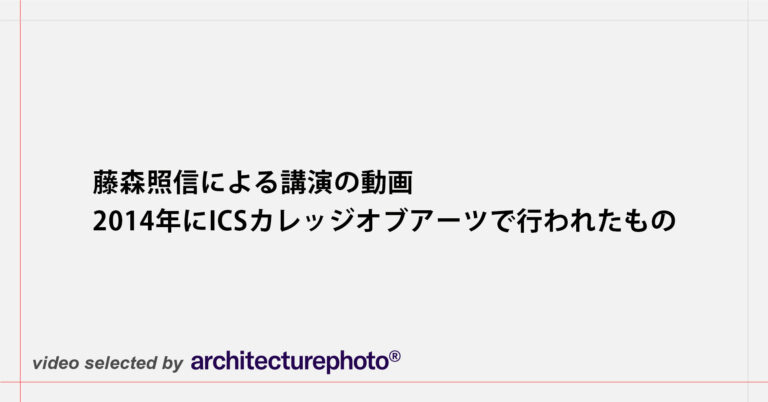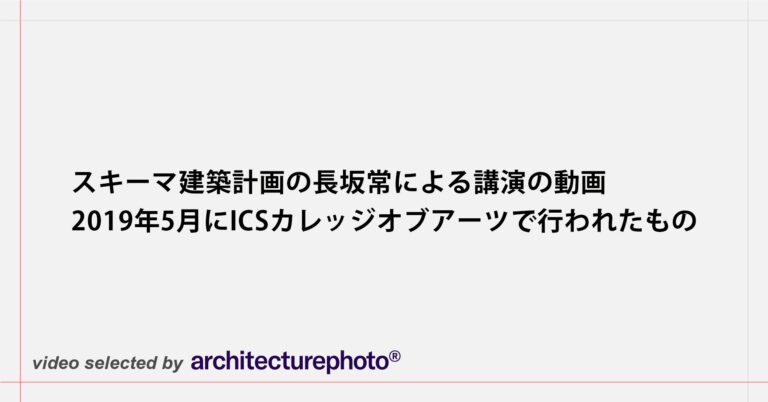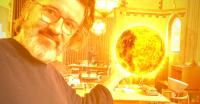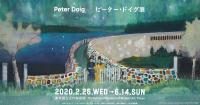藤森照信が、2014年にICSカレッジオブアーツで行った講演の動画です。アーカイブされたいたものが2020年5月に公開されました。
video archive
スキーマ建築計画の長坂常が、2019年5月にICSカレッジオブアーツで行った講演の動画です。
オラファー・エリアソンがAcute Artとコラボして、ARで鑑賞できるアート作品をリリースしています。リンク先はdesignboomに記事です。スマートフォンにAcute Artのアプリをダウンロードすると一部を無料で体験できます。先行して、ストリートカルチャーで評価の高いKAWSも作品を同アプリから公開していて、その紹介記事(日本語)はこちらで読むことができます。
以下は、オラファーの公式アカウントに投稿された作品の動画。
著名な画家 デイヴィッド・ホックニーへのインタビュー動画「The World is Beautiful」です。制作はルイジアナ美術館。
東京国立近代美術館が、ピーター・ドイグの展覧会の会場の様子を3DVRで公開開始しています。新型コロナウイルス感染症の感染予防・拡散防止のため2020年5月19日現在も休館中です。また図録に収録された論考の一部も公開されています。また、国立科学博物館と森美術館も既に同様の試みを行っています。
展覧会の公式概要は以下。
ピーター・ドイグ(1959-)は、ロマンティックかつミステリアスな風景を描く画家です。今日、世界で最も重要なアーティストのひとりと言われています。彼は、ゴーギャン、ゴッホ、マティス、ムンクといった近代画家の作品の構図やモチーフ、映画のワンシーンや広告、彼が過ごしたカナダやトリニダード・トバゴの風景など、多様なイメージを組み合わせて絵画を制作してきました。
私たちが彼の作品に不思議と魅せられるのは、誰もがどこかで見たことのあるイメージを用いながらも、見たことのない世界を見せてくれるからだと言えるでしょう。本展は、ピーター・ドイグの初期作から最新作までを紹介する待望の日本初個展です。絵画から広がる想像の旅へ、みなさんをお連れします。
韓国のデザイン会社 d’strictによる、ソウル市江南区のメガサイズスクリーンに投影された、波をテーマにしたメディアアート「WAVE」の動画です。この場所は、韓国版タイムススクエアと言われる場所だそう。彼らのvimeoのページで、その他の作品の動画も閲覧することができます。
SHARE 構造家の金箱温春へのインタビュー動画
構造家の金箱温春へのインタビュー動画です。
隈・安井設計共同企業体が設計を進めている、滋賀の「守山市新庁舎」の基本設計書(案)と解説動画が公開されています。
下記リンク先のPDFでは概要版(2ページ)と基本設計書(案)合計28枚が公開されています。2019年8月に隈・安井の優秀者選定が発表されていました。
以下は解説の動画。
このたび、新庁舎整備事業に係る基本設計を行い、「守山市新庁舎『つなぐ、守の舎』整備基本設計書(案)」をとりまとめました。
つきましては、より良い新庁舎とするため、「守山市新庁舎『つなぐ、守の舎』整備基本設計書(案)」を公表し、市民の皆様のご意見と情報を募集します。
竹中大工道具館が、期間限定で常設展示の内容を動画で公開・解説しています。2020年8月31日までの限定公開だそう。新型コロナウイルス感染症予防対策による臨時休館中の企画のようです。
オラファー・エリアソンの東京都現代美術館での展覧会「ときに川は橋となる」の会場動画です。2020年5月13日現在、新型コロナウイルス感染拡大防止のため休館中です。図録はamazonで先行発売中。
オラファー・エリアソン(1967年生まれ)はアートを介したサステナブルな世界の実現に向けた試みで、国際的に高い評価を得てきました。本展覧会は、エリアソンの再生可能エネルギーへの関心と気候変動への働きかけを軸に構成されます。それは展覧会のタイトルにも反映されています。エリアソンは言います。「〈ときに川は橋となる〉というのは、まだ明確になっていないことや目に見えないものが、たしかに見えるようになるという物事の見方の根本的なシフトを意味しています。地球環境の急激かつ不可逆的な変化に直面している私たちは、今すぐ、生きるためのシステムをデザインし直し、未来を再設計しなくてはなりません。そのためには、あらゆるものに対する私たちの眼差しを根本的に再考する必要があります。私たちはこれまでずっと、過去に基づいて現在を構築してきました。私たちは今、未来が求めるものにしたがって現在を形づくらなければなりません。伝統的な進歩史観を考え直すためのきっかけになること、それがこうした視点のシフトの可能性なのです。」
オラファー・エリアソンは1990年代初めから、写真、彫刻、ドローイング、インスタレーション、デザイン、建築など、多岐にわたる表現活動を展開してきました。本展は、エリアソンの代表作を含む、多くが国内初公開となる作品の数々で構成されています。自然現象を再構築したインスタレーション、光と幾何学に対する長年の関心が反映された彫刻、写真のシリーズ、ドローイングと水彩画、公共空間への介入をめぐる作品等が展示されます。
エリアソンは、幼少期に多くの時間を過ごしたアイスランドの自然現象を、長年にわたり撮影してきました。《溶ける氷河のシリーズ 1999/2019》(2019年)は、過去20年間の氷河の後退を鑑賞者に体感させます。また、私たちと自然との複雑な関係をめぐる思考が反映されたエリアソンのインスタレーションは、光、水、霧などの自然現象をしばしば用いることによって、周りの世界を知覚し、世界をともに制作する方法について、私たちひとりひとりの気づきをうながします。さらに、本展覧会では、最初期の代表作として、暗闇の中に虹が現れる《ビューティー》(1993年)をご紹介します。アトリウムの吹き抜け空間では、大規模なインスタレーションが本展のために制作されます。
スタジオ・オラファー・エリアソンの活動は美術作品の制作に限定されません。スタジオでは日々、実験とリサーチ、コラボレーションによって、さまざまなアイデアやプロジェクトが開発されています。本展覧会では、サステナブルな生分解性の新素材やリサイクルの技術に関する近年のリサーチの一部をご紹介します。
菊竹清訓の「旧都城市民会館」を3次元スキャンしたデータから制作したモデルを、ARでリアルタイムに切断して断面表示する様子の動画が、twitterに投稿され2000以上のいいねが付くほど話題になっています。藤原龍が投稿したものです。この試みは、弊サイトでも紹介したgluonによる、「旧都城市民会館」を3次元スキャンで記録するプロジェクトを発展させたものと思われます。デジタルでの保存観点のみならず、建築を伝える新たな方法としても興味深いテクノロジーと言えるでしょう。
1億ポリゴンなAR、出来てしまった。
地下から屋根裏まで、
全部入りな旧都城市民会を輪切りに。#AzureRemoteRendering の力すごい。#HoloLens2 pic.twitter.com/jssuHyirZ4— 龍 lilea (@lileaLab) May 12, 2020
また、こちらのページでは、同モデルの内装情報込みのARの3Dモデルが新規に公開されていて、スマートフォンを使って、旧都城市民会館の内部の様子も閲覧できます。
構造家の大野博史(オーノJAPAN)へのインタビュー動画です。
坂茂が、大分県立美術館での自身の建築展「仮設住宅から美術館まで」の為に、ネットを使って遠隔地から収録したギャラリートークの動画です。展示会場の様子も同時紹介されています。
大分県立美術館で開催する「坂茂建築展-仮設住宅から美術館まで」のギャラリートークを坂 茂氏自らが行いました。ぜひ、ご覧ください。
「坂茂建築展-仮設住宅から美術館まで」(大分県立美術館、2020年5月11日(月)~7月5日(日))
隈研吾の建築が6つある高知・梼原町に「隈研吾の小さなミュージアム」が設立されていて、公式サイトではインタビュー動画なども閲覧可能です。こちらによれば、開館は2020年5月11日に延期されているとこのこと(その後の情報は不明なので、直接ご確認ください)。サイトのドメインを見る限り梼原町が運営しているようです。
世界的建築家・隈研吾 木造建築の物語はこの小さな町からはじまりました。
高知県梼原町にある古い芝居小屋ゆすはら座と出逢った隈研吾。
そこから隈研吾氏と梼原町との長い交流が続き、その縁がきっかけで多くの隈研吾作品が梼原町には存在します。
梼原町内5箇所6つの隈研吾作品が集まる、世界でも類をみない梼原町は町全体がミュージアムと言えます。
木橋ギャラリーの一画にある「隈研吾の小さなミュージアム」を拠点に隈研吾作品に触れる梼原町の町歩きをお楽しみください。
以下に、youtubeにも公開されている同ミュージアム制作の5つの動画を掲載します。
隈研吾が、新型コロナウイルスと建築・都市について関して語っている動画です。テレビ東京で2020年4月23日に放送されたものがyoutubeでも公開されました。
4月23日(木)放送 各界で活躍する人によるリレーメッセージ「コロナに思う」。今夜は東京オリンピック・パラリンピックのメイン会場となる新国立競技場の設計を手掛けた建築家の隈研吾さんです。新型コロナウイルスの感染拡大をきっかけにこれまで大都市に集まろうとしてきた私たちの生活が大きく変わるといいます。
美術家の森村泰昌が、自身がキュレートした富山県美術館での展示「森村泰昌のあそぶ美術史―ほんきであそぶとせかいはかわる」が休館したことを受けて制作した展覧会解説動画を公開しています。動画のタイトルは「森村泰昌のあそび術―世界をかえる方法おしえます」です。同展は、新型コロナウィルス感染拡大防止のため会期途中で休館となっていました。
以前に公開されていた同展の会場を森村自身が解説した動画は以下。
(会場施工監修は日埜直彦が務めています)




